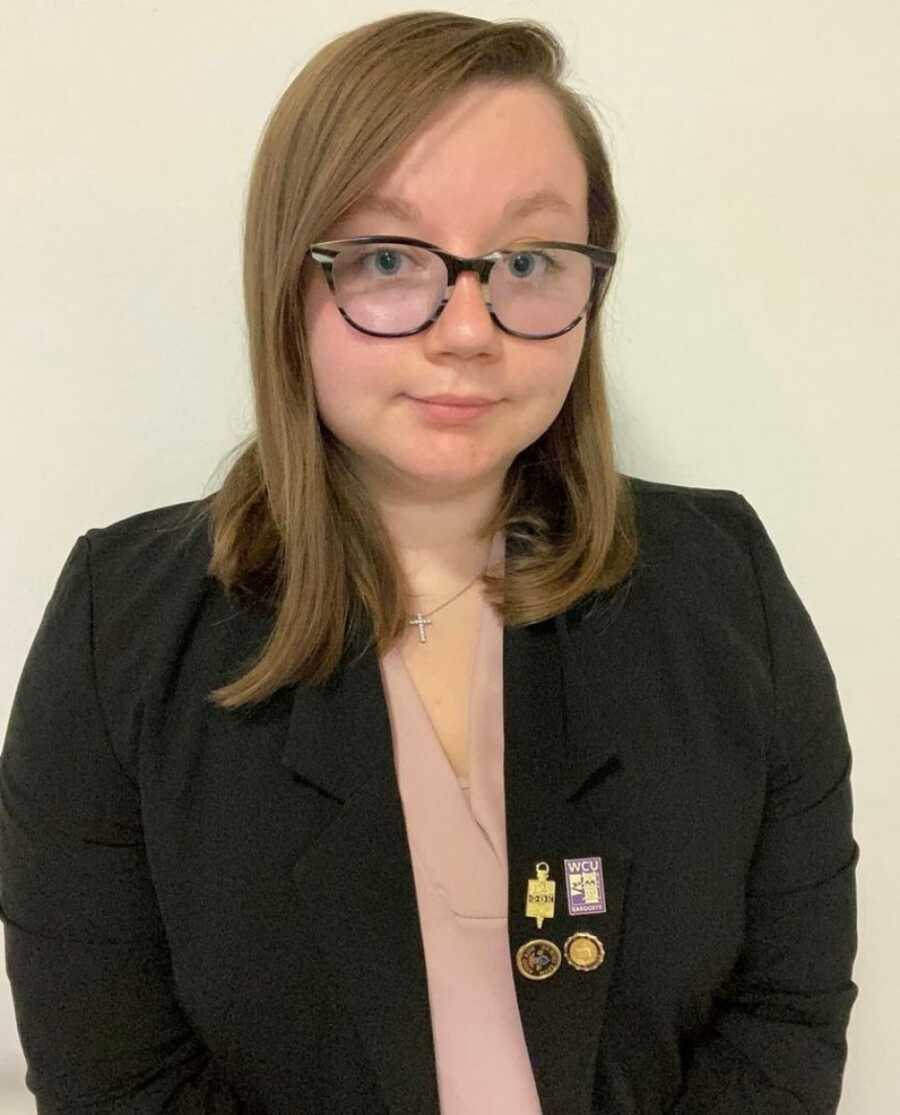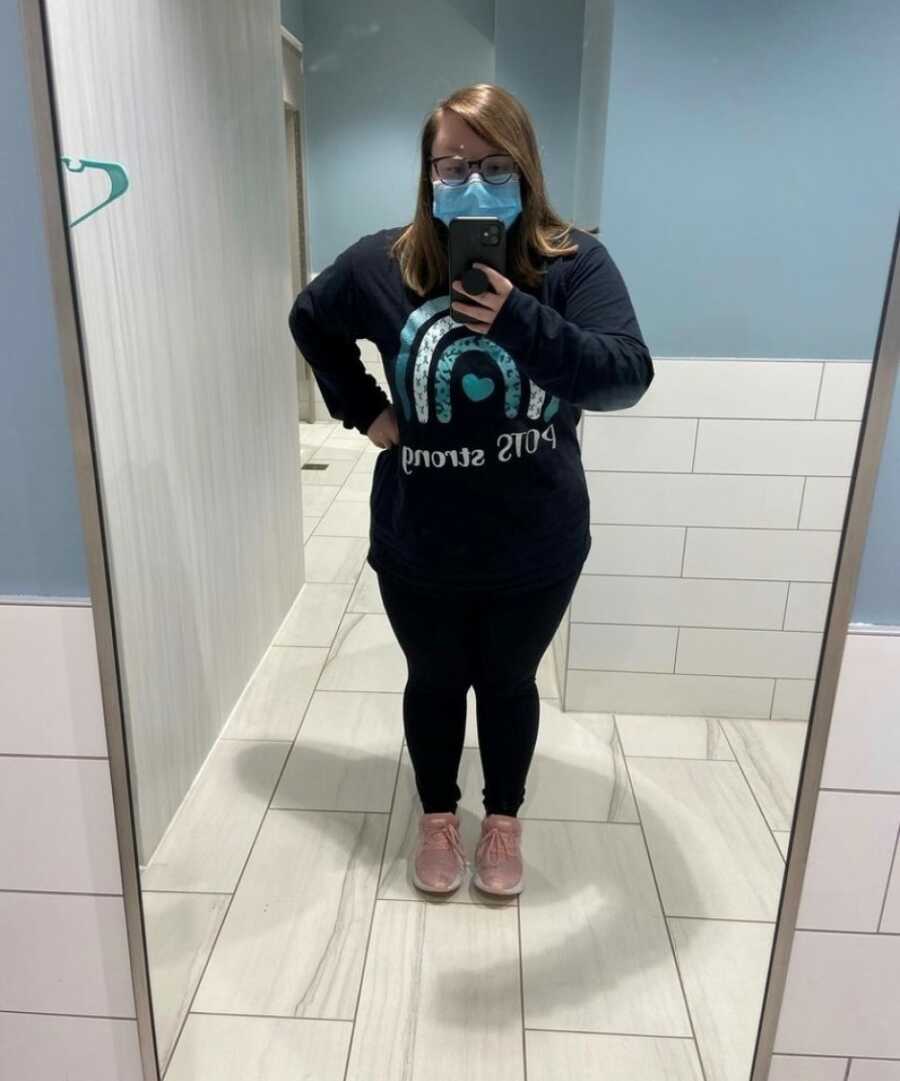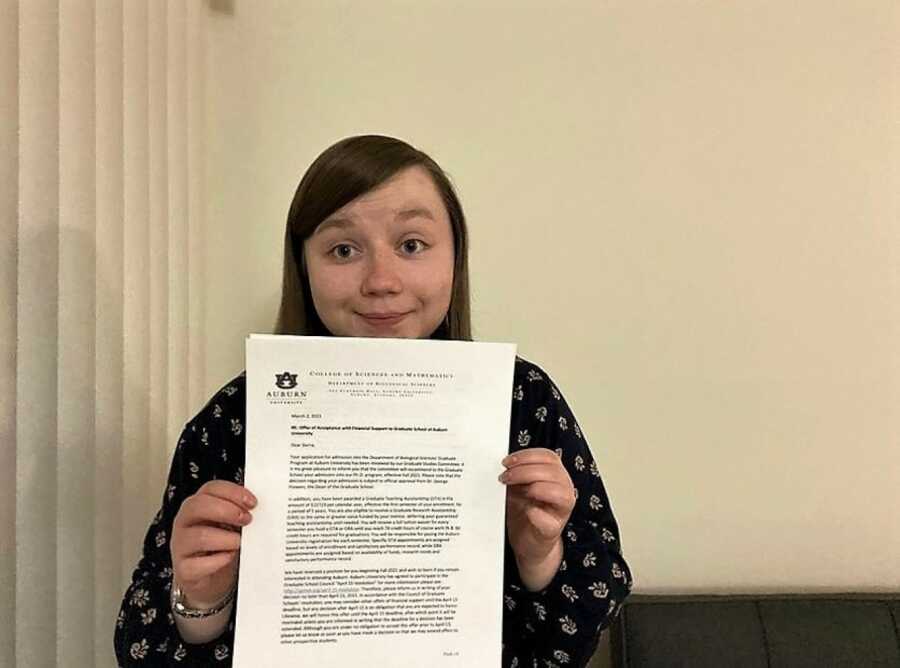Disclaimer: This story contains details of abuse that may be upsetting for some.
Growing Up
“One does not choose their circumstance, but one can choose their response. I, Sierra Rice, defy the statistics. I am an overcomer. I am resilient.
Growing up, my biological mother and father divorced when I was 4 years old. I vividly remember how my father was physically, mentally, and emotionally abusive to my mother. He also threatened to harm my younger brother, sister, and myself.

My mother re-married when I was 7 years old. I have one biological sister, one biological brother, one half-brother, and one half-sister. Life was sincere and filled with fun memories in Ohio until my mother passed away in 2009 due to diabetic complications and sudden cardiac arrest. Suddenly, being the eldest child at 11 years old, I had to grow up and care for my four younger siblings.
Over the next several months, the court ordered my siblings and me to move with our biological father while our half-siblings continued to live with our stepfather. We were afraid because we knew what our father was like in the past; however, we tried to give him a chance. Six months after living with our father, the abuse started to arise within the household. Every time we tried to tell someone of his wrongdoings, the frequency and intensity of the abuse would increase. I clearly remember when my father broke my nose, choked my brother, and gave my brother, sister, and I countless concussions and welts, along with the physical neglect of not eating enough food.
For the first time in 2013, I prayed that if God were real, He would get my siblings and me out of that situation before anything else happened. God answered our prayers. Our father was arrested. Then, we were taken into Department of Social Services (DSS) custody in Johnston County, North Carolina. My siblings and I started together in the same foster home; however, my siblings and I were separated into different foster homes over time.
Breaking The Cycle
I was determined to break the cycle. I was dual-enrolled in Johnston County Middle College High School and Johnston Community College. I rose against the odds. I was determined to break the chain and not repeat the cycle of abuse. I was determined to show the world that foster kids can be successful. In May 2016, I graduated high school with 51 college credits, high honors, and a 4.4 GPA. In December 2016, I earned my Associate in Science. In August 2016, I started a new journey at Western Carolina University with dreams and countless ambitions.
During my first semester at Western Carolina University in 2016, I fell from a 20 foot cliff onto sharp, jagged rocks at Paradise Falls. Once I hit the rocks, I knew God saved me and I would make it. I retained permanent spinal fractures and abnormalities, later resulting in Disc Degenerative Disease (DDD), but I am grateful to walk and be alive. I was more determined than ever to receive my education and break the cycle. I became involved with campus ministries and leadership. I became closer to God. My heart changed for the Lord, who led me in a new direction. My relationship with God gave me faith and courage to make a difference as a domestic violence, foster care, and trauma survivor.

In December 2017, I was abandoned by my foster family. I was crushed, but God and my church family helped me get through it. Through God, I learned to be genuinely grateful for what I had. Life started to turn around for the better. I ran hard after the Lord and what He had for me.
Medical Symptoms
In September 2018, I received my 11th concussion from playing volleyball. Previously, I had 10 concussions from child abuse. I experienced 16 concussions due to passing out spells. My comorbidities and symptoms increased to include overactive bladder syndrome (OABS), irritable bowel syndrome (IBS), kidney stones, blurred vision, hearing loss, dermatological issues, body aches, chronic myofascial pain, hypermobility spectrum disorder, muscle spasms, high heart rate, low blood pressure, migraines, dizziness, obesity, fainting, anxiety, depression, nausea, abdominal pain, bloating, brain fog, overheating, sweating, fatigue, tremors, and many more.
In May 2019, I had to take mandatory bed rest. The doctors in the mountains could not help me with the complexity of my unknown and misdiagnosed disorder. However, I knew that God was faithful. I continued to fight and pursue my education.
In December 2019, I completed an Undergraduate Research Senior Thesis, 7 conferences, 2 grants, 2 mentorships, 2 years of research, and an Excellence in Biology Research Award along with countless hours of volunteer service upon graduating from Western Carolina University with a bachelor in Cellular and Molecular Biology.
Due to COVID-19, I had to move to Raleigh to help aid in qPCR testing as a Molecular Scientist during the pandemic in August 2020. My health continued to fail, while the comorbidities and symptoms increased severely.

In January 2021, I transferred jobs to work as Molecular Scientist II, where I work in Oncology Assay Validation and Development and Biomarker Research through Next-Generation Sequencing (NGS). I finally had access to better health care at the University of North Carolina (UNC), Duke University, and WakeMed Healthcare.
In March 2021, I was accepted by Auburn University’s Ph.D. in Biology Program. However, I had to decline because my health was still unresolved and I was in physical therapy programs for my pelvic floor and spine.
POTS And Vasovagal Syncope Diagnoses
In September 2021 at UNC, I was finally diagnosed with an overlap of Postural Orthostatic Tachycardia Syndrome (POTS) and Vasovagal Syncope. Postural Orthostatic Tachycardia Syndrome (POTS) is a condition where the autonomic nervous system is unable to regulate circulation, heart rate, and blood pressure. POTS patients have extremely high heart rates. Patients often develop POTS after head injuries and traumas, viral illnesses, pregnancy, long periods of hospitalization and prolonged immobilization, and autoimmune disorders. Neurocardiogenic Syncope or commonly known as Vasovagal Syncope is a condition that involves a temporary drop in the amount of blood that flows to the brain along with a drop in blood pressure and heart rate. POTS is the overall culprit for all my comorbidities and symptoms. I started to see an improvement in my POTS through the help of my healthcare providers in Raleigh, Durham, and Chapel Hill, North Carolina.
In November 2021, I developed pericarditis (swelling around the outer layer of the heart) due to a severe allergic reaction. The pericarditis worsened my POTS. Due to the swelling around my heart and the inability to move as much as I once did, my muscles started to atrophy.
In March 2022, I had to receive cardiac infusions and almost became completely disabled. Thankfully, the Lord protected me, and I have a flexible work schedule. I am grateful that my family, friends, and coworkers helped and supported me physically, mentally, and emotionally while in a deep valley.

In April 2022, I entered a POTS-specific physical therapy program at WakeMed. Upon completing the program in June 2022, I regained muscle tone, lost weight, decreased my heart rate, normalized blood pressure, and restored my energy. I am at the point of POTS management. Despite my POTS disability, I am resilient!
‘But those who hope in the Lord will renew their strength. They will soar on wings like eagles; they will run and not grow weary, they will walk and not be faint.’ – Isaiah 40:31 NIV.
Educating Others
Due to my POTS journey and scientific background, I want to educate everyone on POTS. In the United States, POTS is underdiagnosed due to insufficient knowledge, healthcare inaccessibility, resources, and patient advocacy. My physical therapist encouraged me to share my experience and resources from cited medical organizations and peer-reviewed journals. I started a YouTube Channel discussing the educational Management of Postural Orthostatic Tachycardia Syndrome (POTS) and Vasovagal Syncope in a presentation format. I received significant interest from my presentation. I made a condensed video on my YouTube channel (POTS Resilience with Sierra) of my management plan. I continued to receive interest in POTS education and management, so I created a Facebook page and Instagram page that you can find below. I receive the most interest from my Instagram reels views. I will continue making content to help POTS patients and their families, friends, and coworkers understand POTS.

Having POTS is challenging daily. The hardest part of my day is getting out of bed due to physical, mental, and emotional limitations. If you can find a reason to get out of bed, it sets the right mindset for the day. It encourages you to move around and start fresh. I am only 25 years old. I have a whole life ahead of me worth living. I am inspired by my progress to not regress to my previous condition. I am confident I will continue to succeed.
Life With POTS
It takes me a little while to pack my meals, dress, and get out the door. I plan five small frequent meals a day. Not only do I have to prepare the nutritional contents of the small frequent meals (SFM) wisely, but I have to plan on how many ounces I can consume per SFM. I plan to eat each SFM within a specific time frame around my daily living activities to prevent nausea, IBS, and esophageal spasms. I plan out my water intake, as POTS patients need 110 – 120 ounces of water per day. Following, six days a week, I participate in cardiovascular or strength training exercises. If I do not exercise, my muscles will lock up and become extremely painful due to Chronic Myofascial Pain and Hypermobility Spectrum Disorder. After exercising, I have enough energy to conquer the day at work.
After I got home from work, I dwindle down with stretches and a nice shower. I often relax by reading or watching tv. I try to sleep at least 8-10 hours per night to help decrease muscle spasms, muscular pain, nerve pain, tremors, and fatigue. It is essential to follow a regular schedule to help decrease my heart rate and alleviate my symptoms.
Please note that if a POTS patient’s condition has severely declined, they might be unable to work and have limited mobility, as I once did. In these cases, cooking, cleaning, and even moving to the restroom can be challenging.

POTS is a complex condition. It is difficult for family members, friends, and colleagues to understand POTS when they physically cannot see POTS nor know what POTS entail. Each POTS patient’s own symptoms vary from day to day. Please understand that POTS patients try their best to keep up with everyone. Still, sometimes this is difficult due to physically not having normal vitals, their personal symptoms limitations, and often elevated levels of fatigue. It is okay to set boundaries to help improve your POTS.
POTS Advice
If you have POTS or suspect that you have POTS, I advise you to keep advocating for yourself until you find the right doctors to help relieve and treat your symptoms. Healthcare inaccessibility is a leading issue in the United States, especially in minorities and impoverished communities.
Fighting POTS is hard. I would recommend therapy to cope with being diagnosed with a chronic and lifelong illness. I have found help through Eye Movement Desensitization and Reprocessing (EMDR) to help cope with POTS and my past traumas of child abuse and foster care. Cognitive Behavioral Therapy (CBT) is another helpful therapy to utilize. 85% of POTS patients suffer from anxiety and other psychological limitations due to the constant increased heart rate, increased epinephrine levels, and other symptoms and comorbidities.

POTS management is possible! I have found through literature and experience that wearing 20-30 mmHg compression socks, drinking 110-120 ounces of water per day, consuming 7-10 grams of sodium per day through diet or taking salt tablets, and taking the medications as prescribed by your cardiologist and healthcare team, physical therapy, cardiovascular and strength training exercise, following a Mediterranean diet and small frequent meals, and getting 8-10 hours of sleep will help decrease the tachycardia, normalize blood pressure, reduce general symptoms, and restore energy. Having POTS is hard, but together we are resilient!
‘Faith is taking the first step even if you don’t see the whole staircase.’ – Dr. Martin Luther King Jr.
Thank you for your time.”

This story was submitted to Love What Matters by Sierra Rice. You can follow her journey on Facebook and Instagram. Be sure to subscribe to our free email newsletter for our best stories.
Read more stories about chronic illness warriors here:
Provide strength and encouragement for others. SHARE this story on Facebook with friends and family.

